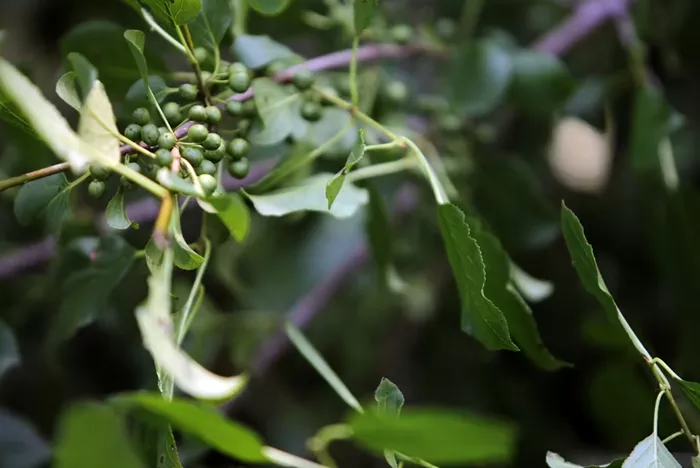Forest bathing, or Shinrin-yoku, became a popular health practice in Japan during the 1980s. Doctors and researchers recommended spending time in forests to relieve both physical and mental stress. But what if you live in a desert?
According to the Japan National Tourism Organization, cities can be overwhelming, making it hard to truly relax. Urban environments are often characterized by sensory overload, crowded spaces, and long working hours, all of which can contribute to stress. A few hours spent outdoors, especially in nature, can help alleviate negative emotions.
“High demand for real estate has made many cities ‘green-poor,'” the organization states, highlighting that few urban areas have enough parks or trees to offer even a semblance of nature. In contrast, forest bathing offers a chance to disconnect from the demands of daily life. Simply being in a forest and focusing on your surroundings can calm the mind while gently engaging the senses.
The Science Behind Forest Bathing
Dr. Jacqualine Grant, executive director of Grand Staircase Escalante Partners, explains that spending time outdoors provides several physiological benefits. Exposure to sunlight helps regulate blood pressure and heart rate, while also calming the nervous system. “Taking a break from stressful situations, like phones or work, brings both mental and physical health benefits,” she said.
Research supports this. A 2017 study reviewed 64 different studies on forest bathing, revealing potential health benefits such as enhanced immune function, improved cardiovascular health, and increased well-being. Some studies even suggest that time spent in nature could reduce the risk of cancer by boosting natural killer cells, which help defend the body against disease.
The Role of Terpenes
A key element of forest bathing is the exposure to plant compounds called terpenes, which are responsible for the pleasant scents of nature. These chemicals are produced by plants and have been shown to have anti-inflammatory, anticancer, and neuroprotective properties. Dr. Grant explains that these compounds, including d-limonene and a-pinene, are found in various plants and can enhance immune function.
For instance, research has found that d-limonene may help prevent the spread of cancer cells in organs like the intestines, liver, and colon. It is also believed to support the immune system by increasing the activity of natural killer cells, which are essential for fighting off cancer and other diseases.
Desert Bathing: Nature’s Benefits in Arid Climates
While conifers in temperate forests are a common source of terpenes, people in desert areas are not without options. Southern Utah, for example, is home to several species of trees and plants that produce similar compounds. Piñon pines, junipers, and ponderosa pines all release beneficial terpenes like pinenes, which are known for their soothing effects.
A 2022 study by Gary Paul Nabhan and others highlighted that desert plants also emit therapeutic compounds. In particular, plants like creosote and ambrosia release aromatic oils that provide physical benefits, especially during the rainy season. These oils, which contribute to the characteristic “smell of rain,” have been shown to have antioxidant and anti-inflammatory properties, and may improve sleep and reduce stress.
Health Benefits of Desert Flora
The compounds produced by desert plants, such as a-pinene, have been shown to have a wide range of benefits, from reducing inflammation to promoting better sleep. For example, creosote bush and four-winged saltbush are both native species in Southern Utah that release oils with these positive effects. Additionally, myrcene, a compound found in the four-winged saltbush, has antidiabetic and anticancer properties.
Research indicates that these plant oils can be absorbed through the air and enter the bloodstream quickly, often within minutes of inhalation. The therapeutic effects of these compounds can be felt within a half-hour, reaching all parts of the body within a few hours.
The Power of Urban Nature
For those unable to access wilderness areas, urban parks and green spaces offer a viable alternative. Ryan Johnson, an urban forester with the Utah Division of Forestry, Fire and State Lands, emphasizes the calming effects of simply being around trees. “Just being near trees, or even looking at pictures of them, can lower heart rates and reduce stress,” he said.
If visiting a park isn’t an option, essential oils derived from trees like hinoki cypress can be used in diffusers to replicate some of the benefits of forest bathing indoors. However, Dr. Grant points out that while oils can provide some relief, the full experience of being in nature is always more powerful.
Looking Ahead: Restoration and Volunteering
To enhance the health benefits of nature, restoring native plant communities in Utah’s deserts and forests could be crucial. In2025, Grand Staircase Escalante Partners plans to work with the Paiute Indian Tribe of Utah and the Colorado Plateau Native Plant Program to gather seeds for future restoration projects. Dr. Grant encourages locals to get involved in volunteer opportunities to help restore these important ecosystems.
Whether in forests, deserts, or urban parks, time spent outdoors—breathing in the natural scents of plants—offers a range of health benefits. From reducing stress and improving sleep to boosting immunity and fighting disease, nature truly is a powerful ally in the quest for better well-being.
Related topics:
- Chinese Botanists Safeguard Africa’s Plant Life
- Herbicide-treated Plants Suffer More Damage from Insects
- Are Plants Intelligent? It All Depends on How You Define Intelligence


